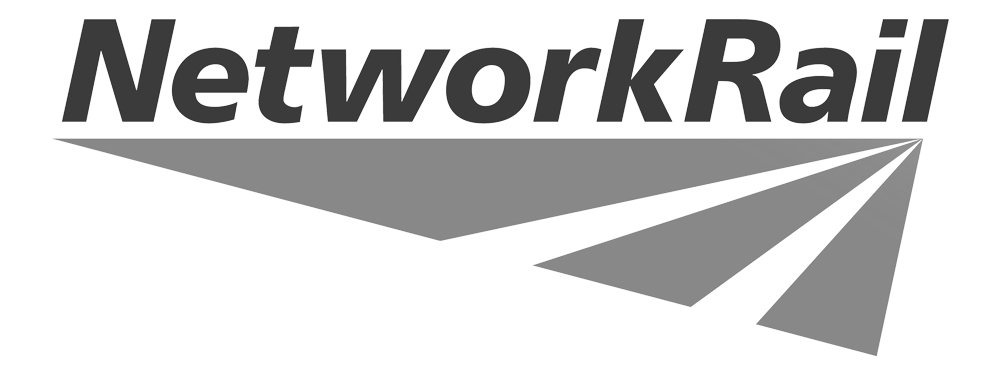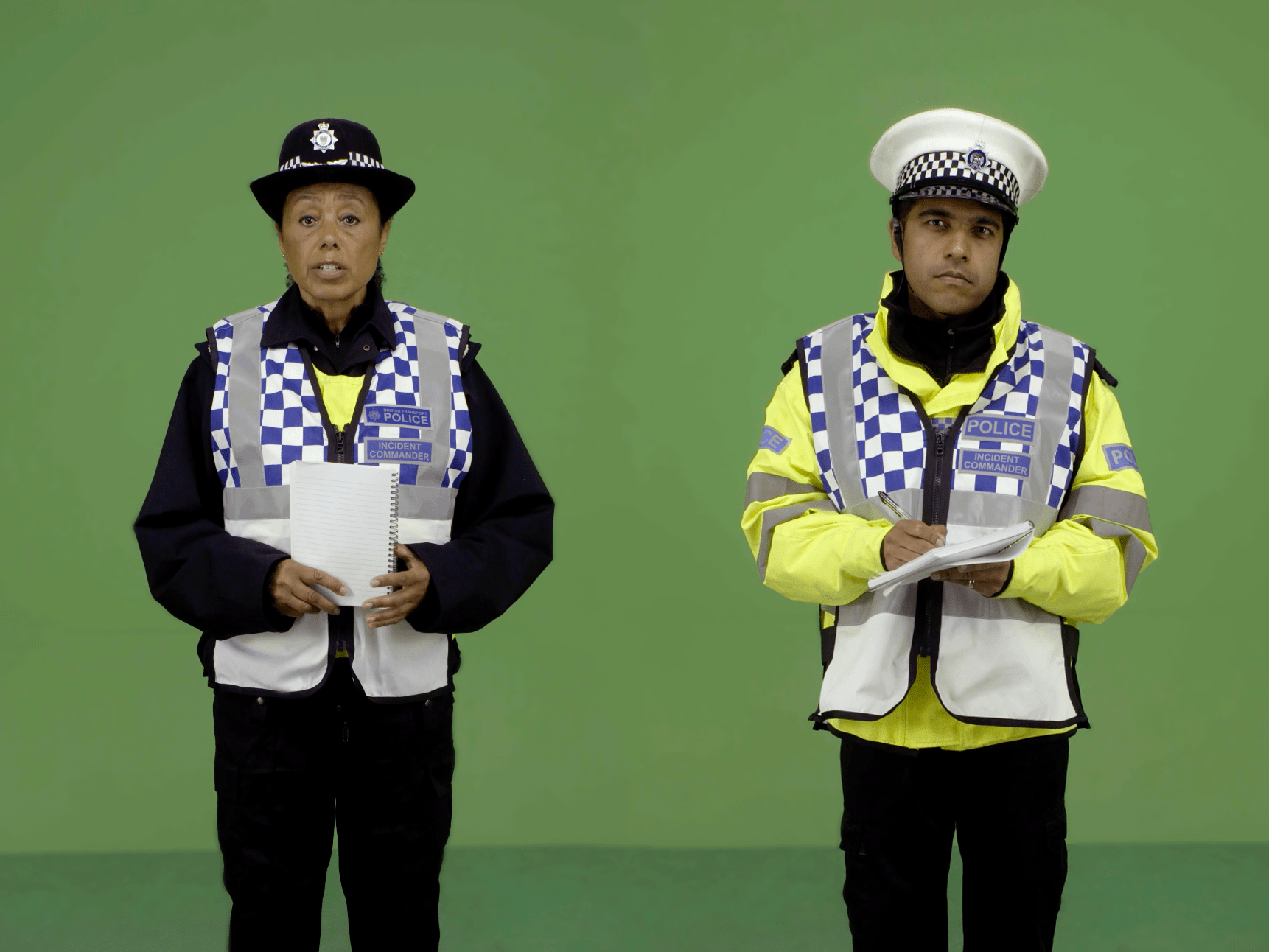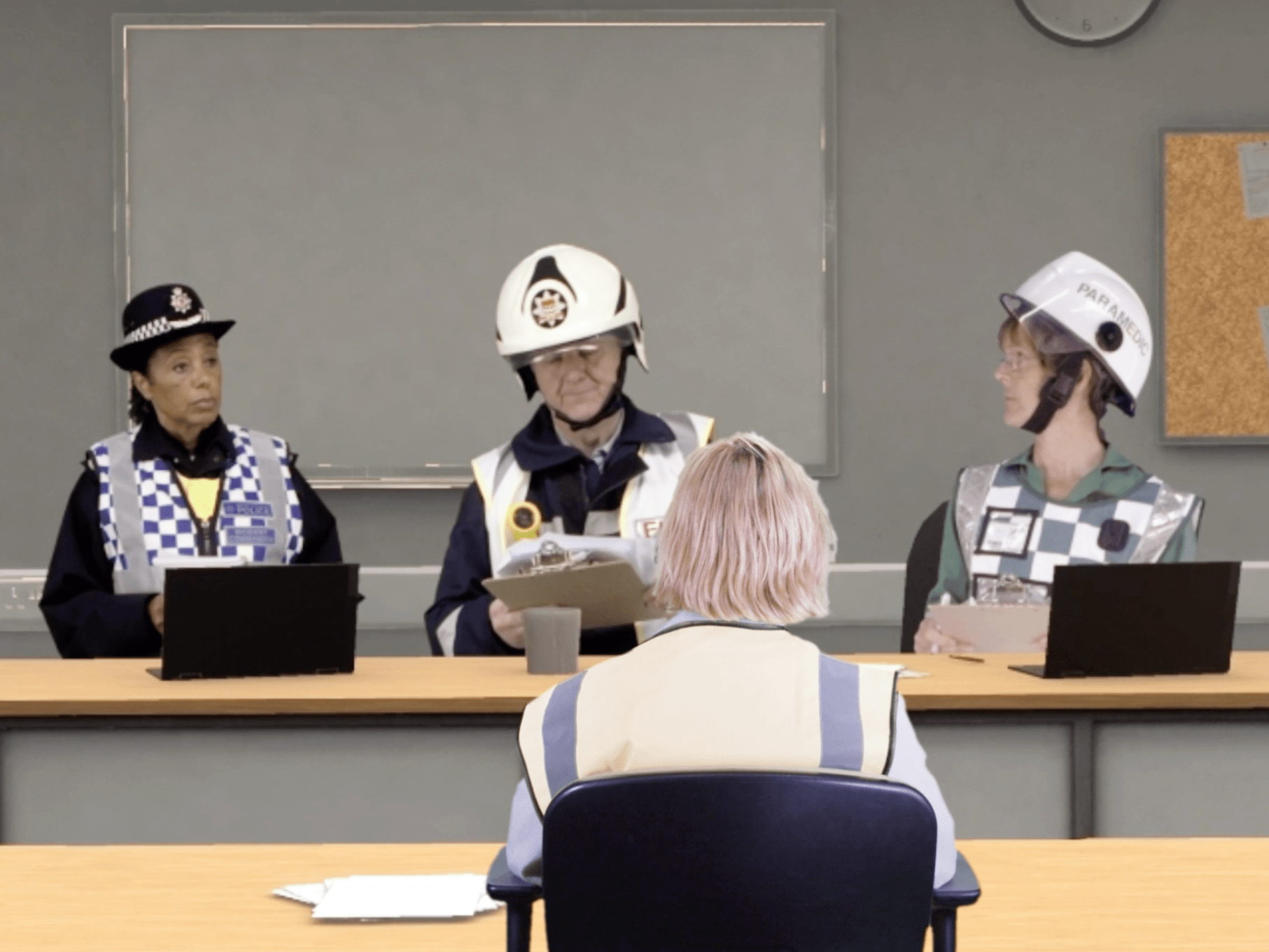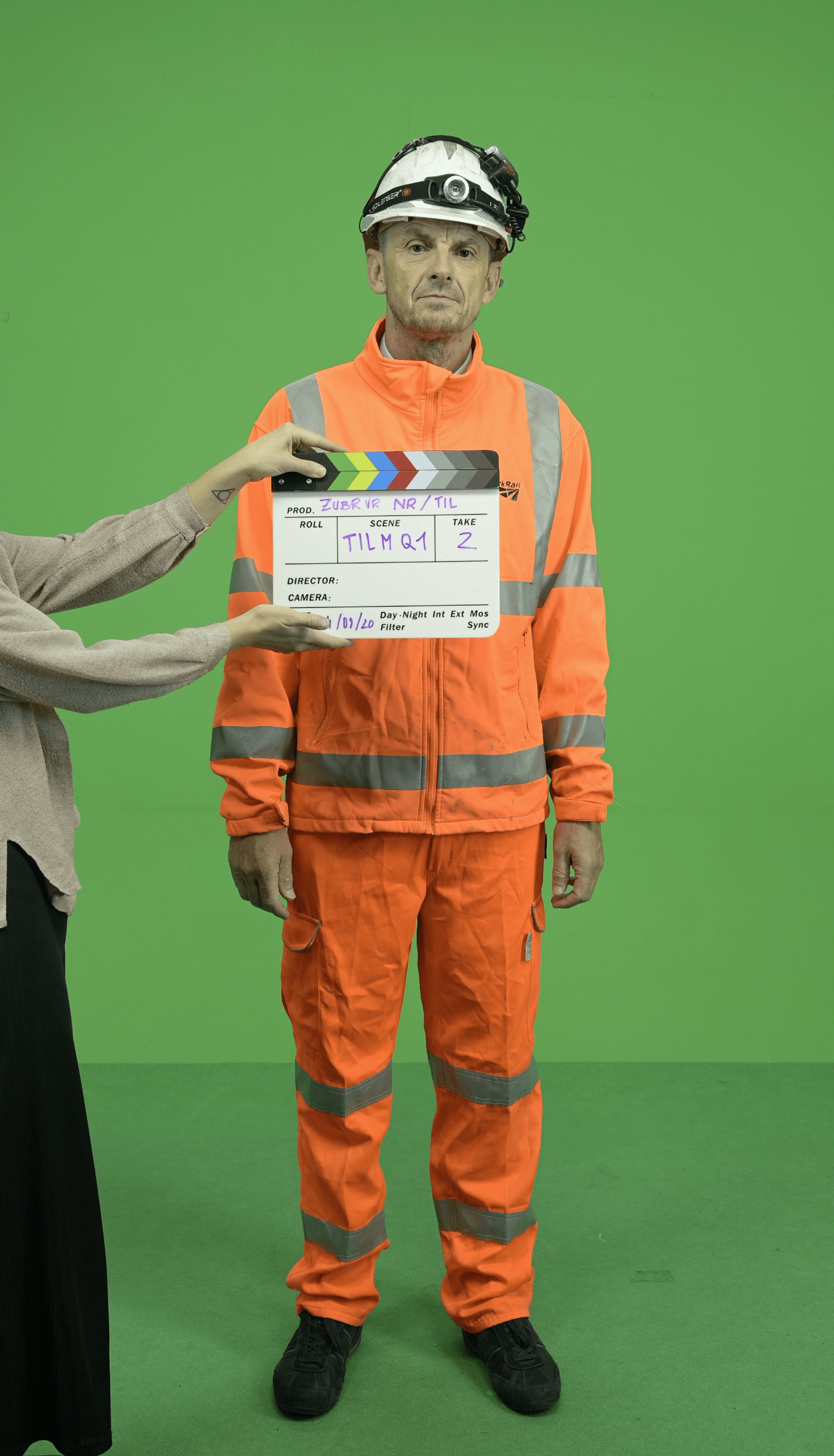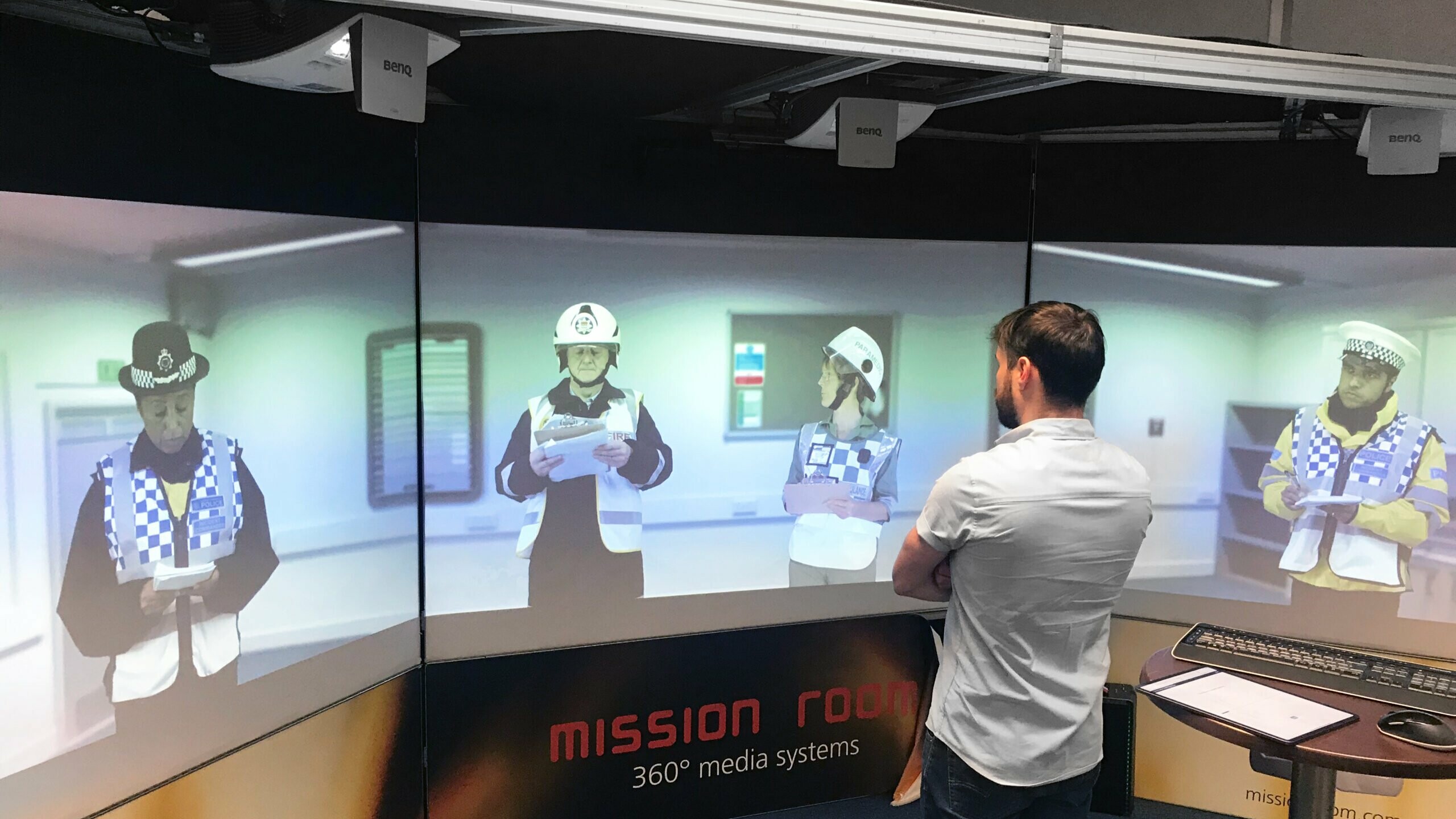Engaging, effective and unforgettable: Incident response training with a digital twist
Network Rail virtual reality training
In 2019, Zubr collaborated with Network Rail to create a customised virtual reality incident response training program for the Operational Incident Responder (OIR) and Tactical Incident Leader (TIL) training courses. Recognised for our expertise in immersive safety training solutions, we designed and developed an interactive learning experience that aligned with Network Rail’s rigorous safety ethos. This cutting-edge training approach was developed to enhance the preparedness and efficiency of Operational Incident Responders and Tactical Incident Leaders, ensuring they are well-equipped to handle major incidents effectively.
Partners
Zubr worked in close partnership with White Hart Multimedia, a specialist training and facilitator provider, and their client, Network Rail, the not-for-dividend owner and operator of Britain’s railway infrastructure. Committed to delivering safe, reliable, and efficient railways, Network Rail sought an innovative training solution to strengthen its workforce’s capability in major incident management. Given Zubr’s expertise in immersive learning experiences, the collaboration was a strategic fit, resulting in the development of a comprehensive and engaging VR incident response training course tailored specifically for Network Rail’s needs.
Non-technical and behavioural skills are always a challenge to train. We have utilised technology to be able to create an interactive video solution, to deliver dynamic and progressive learning for our delegates.”
Oliver Swadkin, Standards and Competency Manager (Incident Training), Network Rail
Transforming teaching acronyms with dynamic VR
Network Rail required an advanced training solution to effectively deliver the OIR and TIL incident response training courses, with a primary focus on ensuring personnel understood and applied the safety acronyms used in Major Incident Management and Briefing. To address the complex demands of non-technical, behavioural training, Zubr developed an immersive virtual reality training module designed to simulate a real-world major incident scenario.
Zubr responded to the brief with our unique approach to creating live-action NPCs, otherwise known as ‘non-player characters’, a term used to describe video game characters who are coded to give pre-determined answers and dialogue. Combining NPCs with dynamic interactive video, we organised and filmed actors in various states – listening, reacting, and engaging with other characters – to craft a seamless yet predetermined sequence of interactions, much like NPCs in video games. This approach was similarly used in our Afloat and Ashore project, where we captured live-action performances to populate a VR experience showcasing part of Derry’s maritime history.
The experience begins in the “Mission Room”, an immersive 360° space which runs entirely on Mission Room hardware. Projected across three surrounding screens, the interactive learning experience begins as the trainee is greeted by a fire officer, who introduces a simulated Major Incident scenario using the METHANE safety acronym. This structured approach ensures that critical information is shared consistently, even in high-pressure crisis scenarios.
METHANE acronym for Major Incident Management:
M – Major Incident declared
E – Exact location
T – Type of incident
H – Hazards present or suspected
A – Access (routes that are safe to use)
N – Number, type and severity of casualties
E – Emergency services present and those required
Following the introduction by the fire officer, the training progresses as other emergency service personnel, including an ambulance officer, a British Transport Police (BTP) operational commander, and a police officer, enter the scenario. Each character delivers their briefing using the IIMARCH acronym, adhering to its structured approach. However, the acronym itself is not explicitly verbalized, requiring trainees to deduce its structure through contextual interactions. This method reinforces learning by embedding the briefing process within a natural, real-world conversation.
IIMARCH acronym for Briefing Structure:
I – Information
I – Intent
M – Method
A – Administration
R – Risk assessment
C – Communications
H – Humanitarian issues
To enhance engagement, trainees must actively participate by delivering their own briefings using the IIMARCH structure. If they fail to provide key details, on-screen characters prompt them with relevant questions. For example, the fire officer may ask, “When can you turn off the Overhead Lines?” while the paramedic inquires, “Are there any vulnerable passengers on board?” If participating trainees continue to make mistakes, the virtual responders become more animated. For example, the paramedic enquires, “When were you going to tell me about the disabled passenger in the fourth carriage closest to the fire?”
Integrated into the Mission Room hardware, session trainers are able to control all responses in real time, depending on the trainee’s delivery, from a Wireless tablet menu. Dynamic prompts such as these reinforce the non-technical, behavioural principles of Major Incident Management and challenge newly qualified Operational Incident Responders (OIRs) to apply their knowledge in a realistic, high-pressure environment.
Beyond the classroom
Zubr’s innovative incident response training experience fosters a deeper understanding of Major Incident procedures by immersing trainees in a secure yet realistic simulated environment. By allowing trainees to apply their newly acquired learning in practical scenarios, the VR experience enhances knowledge and behavioural skills retention, whilst strengthening their comprehension of the relevant roles and responsibilities, whether for Operational Incident Response or Tactical Incident Leadership.
Extensive research highlights the benefits of immersive training solutions in creating engaging and effective learning experiences. Virtual reality-based training has been shown to improve knowledge retention by enabling trainees to practice and apply skills in a simulated, risk-free environment. By catering to individuals with varying levels of experience, this approach ensures consistent and effective training outcomes. Network Rail’s investment in VR training enhances the preparedness of both OIRs and TILs, reinforcing their ability to execute critical safety procedures with confidence and precision.
We’ve since partnered with White Hart Multimedia to deliver an engaging AR safety training experience for the construction workers assigned to the C1 section of HS2 railway project, delivering yet another highly effective training experience.

